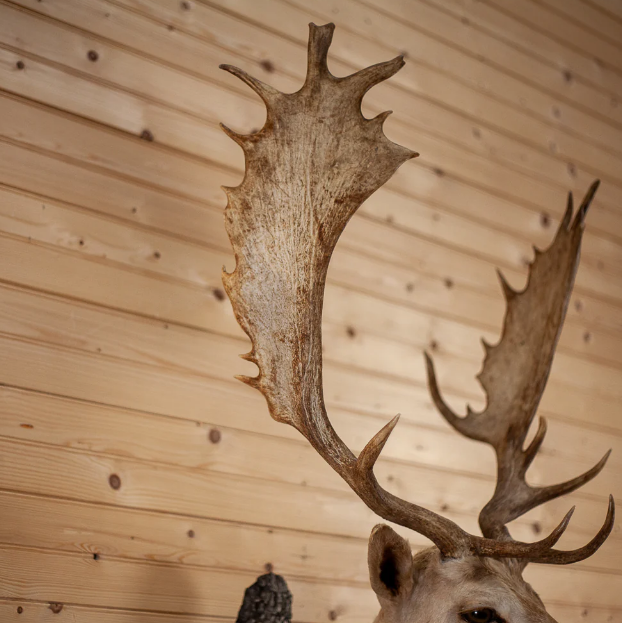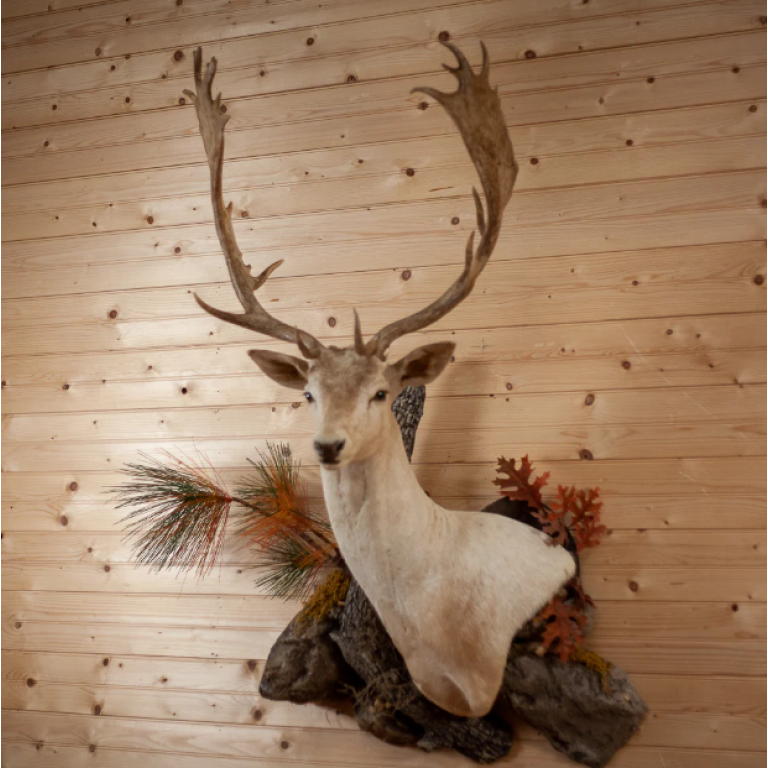Deer Taxidermy Fundamentals Explained
Deer Taxidermy Fundamentals Explained
Blog Article


As it is actually extremely hard to pores and skin a deer specimen cleanly without the abnormal flesh nonetheless connected to it, the next rational move from tanning the skin is to clean it and remove Those people unneeded intended-to-rot tissues such as the cartilage and leftover fatty tissues.
After the skinning process, it is necessary to tan the hide to stop decay and preserve its excellent. Eliminating abnormal flesh, cartilage, and fatty tissues is vital to ensure a cleanse and properly-preserved disguise.
What's the distinction between a burrower, weaver and hunter? Kind images of spiders into these three groups and examine the variations between spider species.
Wall Pedestal With Landscape Wall pedestals have just one shoulder beside the wall and one other shoulder clear of the wall. This wall pedestal also has landscaping which provides art and wonder towards your trophy and places it in his organic environment.
Creative Taxidermy, this unique department of taxidermy, has an effect on the collective creativity. Over a information, having said that, it really is an invitation to reflection, a constant and multifaceted reworking of contemporaneity, an attempt to use these animal remains to be a mirror to research ourselves and our Culture, composed of human beings and animals.
Taxidermy has contributed to the analyze of taxonomy. Sally Gregory Kohlstedt writes that as early given that the nineteenth century, “purely natural history museums were the principal locale for dialogues and Trade of specimens among the Those people debating identification and link amongst natural objects.”[3] Standard taxonomy mainly concerns "morphology.
Displays of birds were being notably common in Center-course Victorian houses – even Queen Victoria amassed an impressive fowl selection. Taxidermy was also ever more used by the bereaved Deer Taxidermy homeowners of lifeless pets to 'resurrect' them.[17]
While taxidermy serves realistic and decorative reasons, Furthermore, it retains sentimental value For numerous hunters
Now that you simply’ve picked the pose and Deer Taxidermy the transform of the deer, you should determine the way you’d choose to display it in your house.
four. The smell of the deer can in fact deter other animals from approaching it just after it has been mounted. Taxidermists experience a process of thoroughly cleansing and dealing with the disguise to remove any odors and ensure the preservation with the deer’s organic magnificence.
Collections Colour during the collections: chook taxidermy The art of taxidermy has become trendy again in recent years. But it really has always been scientifically valuable. Chicken curator Hein van Grouw demonstrates how it's carried out.
In addition, you need to think about the space and wall you intend to hold the mount. Generally speaking, you'd like the deer to face a doorway or the center in the area. You could see why you plus the taxidermist must be on exactly the same web site. In any other case, the deer can look silly gazing a closet door. It's also wise to think about what else you may place beside your new mount. Are there other deer or mounts sharing that wall? Do you want almost everything seeking in a similar course or almost everything looking at the deer in the center of your wall? Ideally, you think this through prior to deciding to get into the taxidermist.
You might not think Substantially about it, but you ought to showcase the facet on the deer with essentially the most character. If you have an incredible drop-tine on the best facet, you most likely need a left-turned mount. Any individual taking a look at the deer will promptly discover the fall-tine on the exposed right aspect. If you have a deer having a substantial spread, you almost certainly want a forward-struggling with mount to emphasize the spread. Just about every buck is different, so choose your time and energy and film where it is going to go and how greatest to showcase its finest features.
Other Victorian taxidermists noted for their iconic anthropomorphic taxidermy do the job are William Hart and his son Edward Hart.[21] They acquired recognition with their renowned series Taxidermy of dioramas that includes boxing squirrels. The two William and Edward designed a number of sets of those dioramas. 1 4-piece set of boxing squirrel dioramas (circa 1850) marketed at auction in 2013 for document rates.